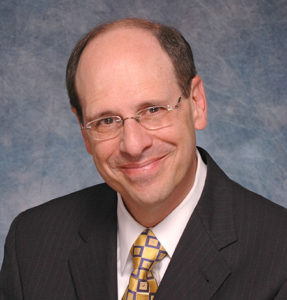
02 Jun Leadership Development That Works
 Despite continuing investments in leadership development, only a few top performers account for most organizations’ successes. What are the problems with current approaches to developing the top tier?
Despite continuing investments in leadership development, only a few top performers account for most organizations’ successes. What are the problems with current approaches to developing the top tier?
By Ralph Jacobson – clomedia.com
An organization’s long-term success depends on employing effective leadership development solutions. Each year, organizations invest billions of dollars with the expectation that their leaders will improve performance in the marketplace. Unfortunately, most current development efforts are only marginally effective.
Despite continued investment by corporations, studies show that only a few top-performing leaders account for the vast success of organizations. In their book, “Extraordinary Leadership,” Zenger and Folkman demonstrate that the top 10 percent of leaders provide two times the profit of the middle 80 percent of leaders. The bottom 10 percent actually lose money.
So what is wrong with current approaches to developing leaders? For one, leaders in most organizations completely relegate the responsibilities to the human resources department, thus failing to weave development efforts into the fabric of the organization. Moreover, after attending outside educational events, many leaders are highly motivated to apply their new learning, but they are discouraged from using their new knowledge by the pressures of everyday corporate life
Perhaps the most critical problem is that at least 80 percent of corporations use the competency approach to build leadership. Among its many problems, this approach typically identifies the wrong competencies and provides inaccurate feedback. In addition, the development plans fail to significantly enhance leader performance. Furthermore, once people receive individual feedback, they tend to focus on weaknesses and take their strengths for granted.
Organizations should not be satisfied with marginal leadership performance. Yet, the commonly used patchwork of initiatives, programs and systems most organizations employ does not deliver results. Rather than employ outmoded leadership development methodologies, companies must establish leadership development agendas that transform everyday managers into leaders capable of working across organizational boundaries to consistently produce outstanding results.
Creating a management agenda that works means expecting a handsome return from the leadership development investment. To do so means relying less on the senior levels by building leadership deep in the organization while focusing on the needs of the organization rather than the development gaps of individuals. It also involves defining leadership results so that people are focused on what they have to do, rather than how they have to change. Finally, measuring leadership performance and providing opportunities for leaders to practice and incorporate new skills is critical for creating a successful leadership agenda.
Build Leadership, Not Leaders
The work of the organization is far too complex for leadership work to be undertaken by only the top few levels on the organization chart. Top-down decision-making for most organizations is ineffective, because decisions are based on incomplete information, are slow to move down the organization chain and often meet with resistance.
It is dangerous to corporate health to assume that leadership is a solo act. People at all levels of the organization need to be brought together to share and process information to ensure that information is quickly and accurately processed. Indeed, distinctions of grade and status can be counterproductive during periods of discontinuous change.
Organizational agility can be attained when leaders at all levels of the organization work and learn together. Rather than build one leader at a time, establish a community of leaders from all levels within the organization who share an understanding of common leadership language, processes and tools. Together, they are more likely to successfully tackle the critical organizational issues.
Focus on the Organization, Not the Individual
Most people have trouble accepting feedback and would prefer to forgo the experience. It is easier for people to accept an assessment that the organization is “broken” rather than admit that they are less than perfect. Rather than deal with the resulting resistance of discounting or ignoring feedback, it is more productive to start the leadership development process by asking leaders to apply their learning to the most critical needs of the organization.
Skip the 360-degree individual assessment process. Instead, define the specific leadership work that must be tackled. Create the linkage between the work and the intended organization improvements. Bring leaders from various parts of the organization together and establish the expectation that they deliver results that far surpass historic levels.
When leaders understand that their development is directly tied to organization performance, they are more likely to be open to new learning and behaviors. Focusing on organizational needs rather than individual weaknesses creates an opportunity to establish a leadership agenda that crosses the more traditional organization boundaries. Leaders will be energized to work on those issues that may have plagued the organization for years.
Demystify Leadership
Thousands of books portray leadership effectiveness in terms of personal attributes. Lofty words are used to describe human traits that few of us could realistically achieve. Consequently, many believe that mere mortals are unable to become great leaders, and as a result, they often shun the more difficult leadership work. It is more productive for leaders to focus on the organizational leadership results to be achieved than to try to get people to change their personalities or belief systems.
Leadership development can be understood as a process with specific steps to undertake at various points. Give people tools to help them see the world from different perspectives, to build commitment with key stakeholders and to create the capacity for learning and change. Learning is reinforced when people successfully use newly learned processes and tools to address issues in ways that are more likely to consistently achieve higher-level results.
Armed with the necessary processes and tools to do the work, leaders will understand that leadership can be taught and learned. When people across the organization use common leadership language and tools, they more easily work across organizational boundaries, overcoming many of the sticking points that almost always limit growth.
Measure It
Many believe that leadership performance cannot be measured. This is a myth. Leadership is a function, just like finance, engineering and sales. These areas, like leadership, have outputs that can be measured. What gets measured, gets done. But as long as organizations hold on to the myth that leadership is unmeasurable, leadership performance will only marginally improve, because progress will be difficult to establish.
For example, leaders are responsible for setting the organization’s direction. Indeed, it is possible to measure whether leaders have adequately established and communicated this deliverable. Here are some examples of possible leadership measurements:
- Is there a viable plan in place to grow the organization?
- Are there contingency plans in case the unexpected occurs?
- Do people understand and buy into the plan?
- Are systems in place to make the plan a reality?
Create cross-functional leadership agendas that include specific action plans and measurement of the impact of implementing them. Evaluate whether leaders are actively using new skills, leadership processes and tools. Leaders will find this particularly useful when they see the relationship between improvement in leadership performance and improvements in the operational and financial performance of the business. Tie demonstrated leadership improvement to reward and recognition programs.
Create Practice Fields
When doctors and lawyers complete their education, they establish a practice. Months before the start of the season, professional athletes attend pre-season practice. Though leadership requires great skill and teamwork, few organizations provide safe opportunities to practice.
Too often, leaders are promoted and expected to instantaneously deliver extraordinary results. Most organizations provide some classroom training, but leave the implementation of what was learned to chance. Indeed, participants in leadership development programs often are frustrated that the realities of organizational life prevent them from implementing what they learned.
The most effective training is not complete until people have an opportunity to use new learning to solve critical issues. This creates a win-win situation. Participants are more likely to find relevance from the learning and receive the reinforcement to continue to use newly acquired skills. The organization benefits by tackling important issues.
Structure the practice fields correctly. Form action-learning teams of two to four people. Define a significant organizational issue to address. Each team should have a coach who helps the team use the new learning and work on its own issues. A sponsor for each team provides necessary resources and receives the team’s recommendations.
De-emphasize finding the right answer. Instead, encourage participants to utilize the new learning and stretch beyond their assumptions. Doing so leads to personal and organizational growth.
Want Proof?
One of the best examples of highly effective, less hierarchical leadership is the U.S. Marine Corps. This branch of the U.S. military is known for its ability to consistently and effectively transform ordinary high school graduates and college students into extraordinary leaders.
The Marines understand that the chaos of the battlefield requires spontaneous decision-making and fluid flow of leadership responsibilities that can only be realized through the highest form of leadership. Leadership development is a core organizational competency that is central to its success.
In “Corps Values” in Inc.com (April 1998), David H. Freeman explained how the Marines use a number of innovative leadership development methods. They rotate leadership responsibilities so that everyone can do leadership jobs. They engage highly structured simulations that are debriefed to measure the effectiveness of leadership performance and ensure that proper learning has taken place. In critical situations, they push down authority for making decisions so that those with the best information have the authority to do so.
Why are the Marines more successful in building leadership than their corporate counterparts? They have learned the limitations of bureaucracy in addressing high-risk and rapidly changing situations. They realize that the highest quality of leadership performance is central to their long-term success. Most importantly, they are committed to doing so.
You Can Do This!
Mediocre leadership is expensive and threatens organizational health. You don’t have to accept this situation. Be resolved to change it.
Begin today to build the organizational capacity to develop great leadership. See leadership as more important than leaders. Define significant organizational issues that must be addressed. Give people the processes and tools to do the leadership work. Measure the improvement in leadership capability. You are likely to find this prescription less expensive and far more powerful than conventional leadership development practices. It simply requires a decision.
Ralph Jacobson is president of Synthesis Consulting Inc., author of “Leading for a Change: How to Master the Five Challenges Faced by Every Leader,” and an adjunct faculty member of The Physician’s Leadership College, University of St. Thomas. Ralph can be reached at rjacobson@clomedia.com.
Subscribe for the best of Leadership Development by email:

No Comments